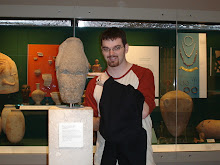Therefore do not ask any more questions about the multitude of those who perish. For they also received freedom, but they despised the Most High, and were contemptuous of his Law, and forsook his ways. Moreover they have even trampled upon his righteous ones, and said in their hearts that there is no God...
The book of 4 Ezra was probably written c. AD 100 (certainly not much after AD 120, though the first two and last two chapters are likely Christian additions which can be dated to the mid- to late- third century), likely in Hebrew (or Aramaic), though it was translated into Greek, Latin, and many other languages at some point (1:519-20). The manuscripts that preserve 4 Ezra are in Latin, Syriac, Ethiopic, Arabic, Coptic (Sahidic), Georgian, and Greek (1:519). All of this evidences that 4 Ezra was somewhat popular in the early church and that it likely represents something of the Judaism during the first century.
This book is highly apocalyptic, having many similarities with the NT book Revelation (1:522), and the section from which our passage is taken (the third vision; 6:35-9:25) is a description of the final judgment and the fate of the righteous and the wicked (1:518). The immediate context of our passage is a conversation between God and Ezra in which Ezra is interceding on behalf of those who have done wicked things. He is hoping that God will relent in his punishment (8:45).
However, as our passage reveals, God will not relent (8:55). They deserve their punishment because they were granted freedom and freely chose not to follow God, i.e., they rejected the Law and God's ways (8:56). Their disdain for God is ultimately manifest in their sin of trampling on the righteous (remind anyone of the eighth-century Israelite prophets?; 8:57)).
Of what relevance is this passage to the anthropology of the Judaism in the NT period? Again, as we have seen in the previous three posts, freedom is granted and humans have the ability to choose God. This certainly seems positive; even though this passage is couched in judgmental language. Those who are wicked deserve to be punished because they freely chose not to follow God. This implies that some, like Ezra himself, will choose the correct path -- which is found by living by God's Law and his ways (8:56).
There is a negative side to the anthropology in 4 Ezra as well. I believe that the best proof of this is 8:3, where God responds to Ezra's plea to relent in punishing the wicked:
Many have been created, but few will be saved
It is hard to imagine this as a positive view of human capability. Though humans may be free, if most of them choose incorrectly, then surely this reveals their inability to follow through with the demands of following God, up to and including the Law (8:56).
Thus, the picture that 4 Ezra paints of human ability is a bleak one. The positive side is that all are free to choose God, but the negative side is that the majority will not.
Not quite as clear cut as Laato would have us believe.
The Impossible Yoke: Part I
The Impossible Yoke: Part II
The Impossible Yoke: Part III
The Impossible Yoke: Part V
The Impossible Yoke: Part VI
The Impossible Yoke: Part VII
The Impossible Yoke: Part VIII





No comments:
Post a Comment